When discussing Japan and the Second World War, one inevitably thinks of the kamikaze, Pearl Harbor, or the atomic bombs of Hiroshima and Nagasaki, which immediately brings up very dark images. But once the war was over, testimonies flowed in various forms, and a new vision appears among the horror: renewal and hope for a better future, in a pacifist world without wars and bombings, so future generations will never have to experience the same destiny. Therefore, it is possible to talk about the memory of the war from various aspects.
Sasaki Sadako (1943-1955) is one of Japan’s emblematic symbols of peace. She is mainly known for her connection with the legend of the thousand paper cranes (senbazuru) and as one of the most famous hibakusha, an atomic bomb survivor in Japan. Thanks to her testimony, she has become a true icon of peace in memory of all the irradiated children and victims of war. Her story moved me so much that I decided to write a thesis about it during my Japanese studies at the university. If you are interested in Japanese history and legends, follow me to Hiroshima to learn more about this hopeful story.
- Hibakusha, the atomic bomb victims and survivors
- The story of Sasaki Sadako, the hibakusha child
- Senbazuru: The legend of the Thousand Paper Cranes, a symbol of peace
- Genbaku no ko no zo Statue, the Children’s Peace Monument in Hiroshima
- Where to learn more about the damages of the atomic bomb in Japan
Hibakusha, the atomic bomb victims and survivors
To understand what a hibakusha is, we must go back to August 1945. With World War II on the verge of ending, Japan was still at war with the United States and was about to experience one of the worst atrocities humanity had ever known. In order to accelerate the defeat of Japan, the American forces choose to drop not one, but two atomic bombs on the country. Thus, “Little Boy” was dropped on Hiroshima on August 6, 1945, followed closely by his little brother “Fat Man” on the city of Nagasaki three days later. Japan was then quickly forced to surrender, and the Japanese surrender was officially announced on the radio on August 15, 1945, by Emperor Showa (1901-1989) himself.
The country had to face a significant challenge: to bring first aid to the irradiated bomb victims and also to rebuild the area. Although the estimation of the number of victims remains unclear and varies, it is clear that these two bombs of unbelievable violence caused thousands of victims on the spot, but also in the years that followed (considering the number of later deaths caused by various types of pathologies due to radiation). In Japanese, they are called “hibakusha” (被爆者, literally “person exposed to bombing”, contraction of Genshi no hibakusha (原子爆弾の被爆者), or “victim of an atomic bomb”). So this term is about the irradiated victims directly and indirectly exposed.
Since 2011, after the triple disaster in Fukushima, anti-nuclear movements and associations have moreover used this same term to refer to any victim of the Fukushima nuclear power plant, adjusting a kanji (hibakusha 被曝者, “victim exposed to radiation”.)
The story of Sasaki Sadako, the hibakusha child
During the Hiroshima bombing, Sasaki Sadako (佐々木 禎子), then two years old, was at her home, about two kilometers from the epicenter. But even when she escaped without injury, she and her mother were exposed to black rain: a phenomenon observed after atomic bombs, formed by the combination of radioactive ash mixing with the rain. Although it has never been officially proven that these can be dangerous, it is highly probable that the contact of this rain with the skin leads to contamination of the cells. Despite this, Sadako and her mother would not suffer any physical damage. She grew up normally and even developed a very cheerful temperament and a talent for competitive running.
However, in 1954, when Sadako was 11 years old, she developed swelling on her neck, ears, and also purpura (a bleeding skin lesion) on her legs, although she had been diagnosed healthy during a medical check-up the same year. Doctors discovered that she had leukemia, as did many of the bomb children whose recovery was not always possible. She was admitted to the Hiroshima Red Cross Hospital in February 1955, and the doctors predicted that she would live about a year. Her destiny seemed to be set.
In the end, she died of her injuries in October 1955, when she was 12 years old. However, she was soon associated with the legend of the Thousand Paper Cranes (senbazuru) and became a true icon of peace. Sadako might also recall the young Anne Frank (1929-1945), a Jewish child deported when she was 15 years old during the Holocaust. The two young girls may be of different nationalities, but they both experienced a tragic destiny: being a victim of war. Through this connection between the innocence of childhood and the horror of war, they become a symbol, and even a model. These two young girls with a tragic fate were also known for their joy of living, their optimism, and their permanent strength. Thus, their story continues to be told today to teach younger generations about the impact of war and the importance of peace.
Senbazuru: The legend of the Thousand Paper Cranes, a symbol of peace
In August 1955, one of Sadako’s classmates came to her bedside and told her about the senbazuru legend (千羽鶴, “1000 cranes”). This legend says that whoever manages to fold 1000 paper cranes, which are then tied together to form a wreath, will have their wish granted, whether it is for health, love, success, or happiness. The crane is a symbol of longevity in Japan, and a prayer will have to be realized with each completed crane. This can be a collective or individual activity, but it is said that the more people who have contributed to the wreath, the biggest the impact.
Sadako started to make 1000 paper cranes in the hope of getting better and running again. She finished the project in August 1955, before she decided to make a second wreath to increase her chances. Some reports state that she managed to bend about 1300 cranes. However, the numbers vary, as the Hiroshima Peace Memorial Museum reports 1,500 cranes, while others count only 644, reporting that after she succumbed to illness in October 1955, her deeply saddened classmates folding the remaining 356 cranes in her honor. The Hiroshima Peace Memorial Museum suggests a different version: despite having completed some 1,500 cranes, Sadako’s wish was not fulfilled, and, at her funeral, her classmates honored her by leaving several cranes at her side.
Thanks to Sadako, the paper crane has become an international symbol of peace. It is the symbol that the city of Hiroshima chose to represent peace after the disaster. If you go to Hiroshima, you will see them everywhere.
Genbaku no ko no zo Statue, the Children’s Peace Monument in Hiroshima
Afterward, Sadako’s story became very popular: adaptations into novels, children’s books, movies, anime, and even songs would make her the symbol of all genbaku no ko (原爆の子, “children of the bomb”). Her story was so popular that a project for a statue built in honor of Sadako and the child victims of war was born at Hiroshima Peace Memorial Park.
Before being recognized as an international symbol of peace, Sadako became first a local inspiration and compelled Hiroshima elementary, middle, and high schools to participate in commemorative activities. The Hiroshima Peace Students Association (Hiroshima heiwa o kizuku jido seito no kai, 広島平和をきずく児童生徒の会) was established in 1956. Its members organized a fundraising campaign to build a statue in honor of Sadako and the children who were killed in the bombing. Donation forms were published in 1957 in the newspaper Heiwa (『平和』 “Peace”), and the association managed to raise the money needed to build the statue.
Top Right: Golden crane under the Children’s Peace Monument. Bottom: From the top of her statue, and keeps watching over Hiroshima and the world.
The statue was dedicated on May 5, 1958, on Children’s Day (kodomo no hi, こどもの日). The nine-meter-high statue shows Sadako immortalized atop the monument on a granite pedestal. In her open arms is a golden crane, as an offering to the gods. Other Hibakusha children can be seen around the statue, as well as the following inscription:
「これはぼくらの叫びです
これは私たちの祈りです
世界に平和をきずくための」
“This is our cry
This is our prayer
For building Peace in the world“
Located in Hiroshima Peace Memorial Park, the statue was named genbaku no ko no zo (原爆の子の像、literally “Statue of the Children of the Atomic Bomb”). Every year, thousands of cranes from many countries are folded in her memory. Arranged around the statue, they have thus become, along with Sadako, true icons of peace and a world without war.
Where to learn more about the damages of the atomic bomb in Japan
Many statues around the world have been inspired by Sadako’s story and the legend of the Thousand Paper Cranes. Her story has spread beyond Japan and is now known internationally. If you go to Hiroshima, you will have the chance to see Sadako. She is still there, from the top of her statue, and keeps watching over the world.
Right: Sadako keeps watching over the city from the top of her statue
If this story moved you as much as it did to me, and if you want to know more about it, a short animation film was made by Arihara Seiji, a director who specializes in wartime cartoons. This short film is called On A Paper Crane: Tomoko’s Adventure (Tsuru ni notte Tomoko no boken,『つるにのって とも子の冒険』). Its pacifist and non-violent story makes it an accessible story for children and adults alike. Here is the trailer:
Nowadays, the subject of the atomic bomb and its impact is still a sensitive one to discuss. But the story of Sasaki Sadako and the legend of the thousand paper cranes gives a message of hope and helps to explain the importance of peace to the younger and future generations. If you go to Hiroshima on your next trip to Japan, don’t miss the opportunity to meet Sadako at the Children’s Peace Monument in the Peace Park!


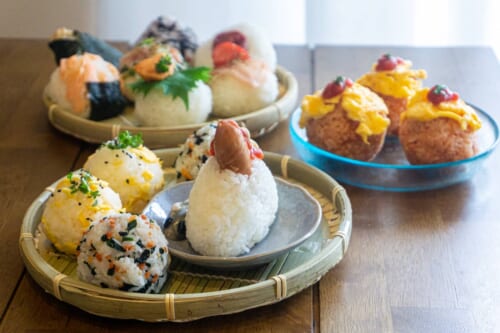
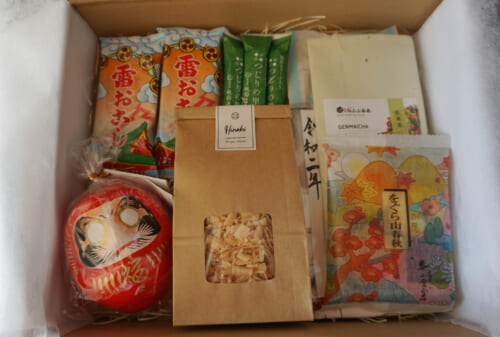
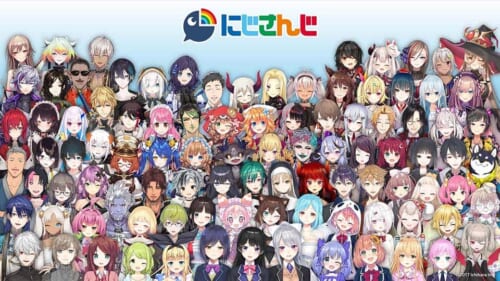
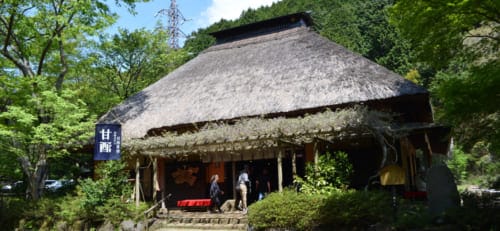
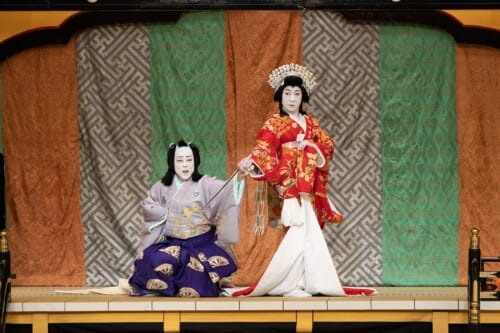



No Comments yet!